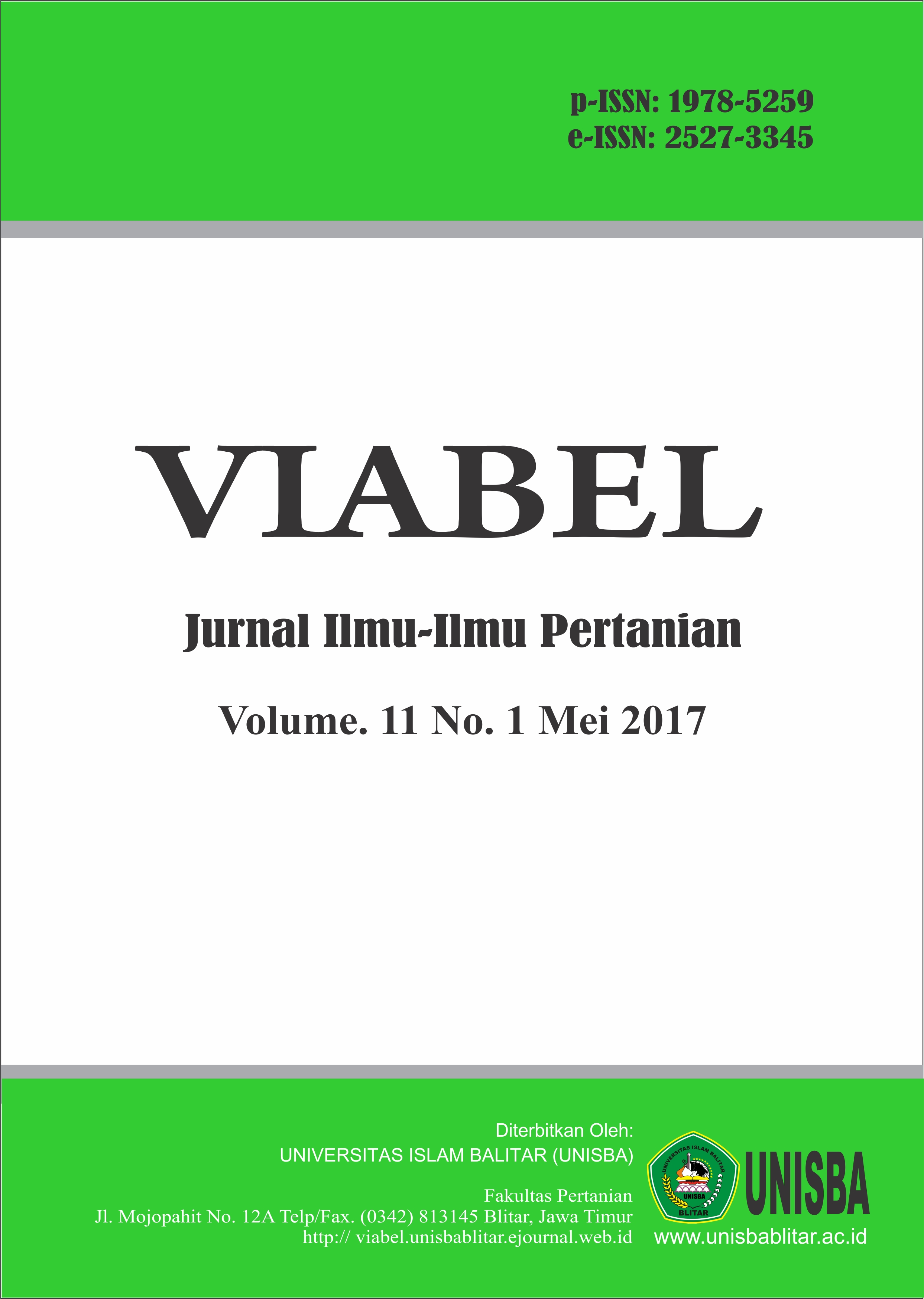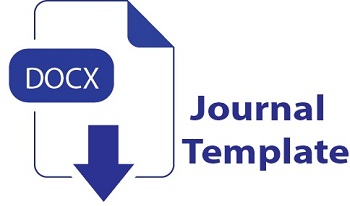PENGARUH PENAMBAHAN ABU SEKAM PADI (RICE HUSK ASH) DENGAN PROPORSI YANG BERBEDA TERHADAP PERTUMBUHAN SELADAI AIR (Lactuca sativa L.)
Abstract
Downloads
References
Agustina, L., 2004. Dasar-Dasar Nutrisi Tanaman. Rineka Cipta, Jakarta.
Azis, A.H., M.Y. Surung., dan Buraerah., 2006. Produktivitas Tanaman Selada pada Berbagai Dosis Posidan-HT. Jurnal Agrisistem. 2, 36-42.
Hanafiah, K.A. 2005. Dasar-dasar Ilmu Tanah. Raja Grafindo Persada, Jakarta
Hasanah, U. 2009. Respon Tanaman Tomat (Lycopersicum esculentum Mill) pada Awal Pertumbuhan terhadap Ukuran Agregat Tanah Entisol. Jurnal Agroland 16(2): 103-109.
Indranada, H.K. 1989. Pengelolaan Kesuburan Tanah. Bina Aksara, Jakarta.
Kiswando, S. 2011. Penggunaan Abu Sekam dan Pupuk ZA terhadap Pertumbuhan dan Hasil Tomat (Lycopersicum esculentum Mill). Embryo 8(1):9-17.
Nazaruddin., 2003. Budidaya dan Pengaturan Panen Sayuran Dataran Rendah. Penebar Swadaya, Jakarta.
Setyorini dkk. 2003. Penelitian Peningkatan Produktivitas Lahan melalui Teknologi Pertanian Organik. Laporan Bagian Proyek Penelitian Sumberdaya Tanah dan Pengkajian Teknologi Pertanian partisipatif
Sitompul, S.M. dan Bambang Guritno. 1995. Analisis Pertumbuhan Tanaman. Gajah Mada University press..Yogyakarta.
Supriyanto dan Fiona Fidryaningsih. 2010. Pemanfaatan Arang Sekam untuk Memperbaiki Semai Jabon (Anthocephalus cadamba (Roxb) Miq) pada Media Subsoil. Jurnal Silvikultur Tropika 1(1):24-28
Syahruddin. 1999. Pemberian Pupuk Arsyad. 2000. Konservasi Tanah dan Air. Institut Pertanian Bogor Press, Bogor.
Authors who publish with this journal agree to the following terms:
- Copyright on any article is retained by the author(s).
- The author grants the journal, right of first publication with the work simultaneously licensed under a Creative Commons Attribution License that allows others to share the work with an acknowledgment of the work’s authorship and initial publication in this journal.
- Authors are able to enter into separate, additional contractual arrangements for the non-exclusive distribution of the journal’s published version of the work (e.g., post it to an institutional repository or publish it in a book), with an acknowledgment of its initial publication in this journal.
- Authors are permitted and encouraged to post their work online (e.g., in institutional repositories or on their website) prior to and during the submission process, as it can lead to productive exchanges, as well as earlier and greater citation of published work.
- The article and any associated published material is distributed under the Creative Commons Attribution-ShareAlike 4.0 International License











.png)
